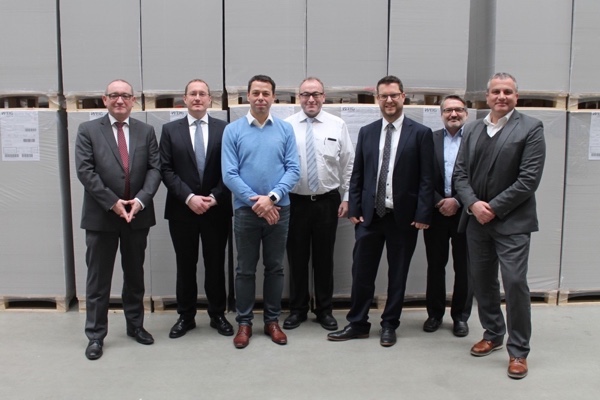Offset Printing
Heidelberg and WEIG implement new digital business model for folding carton printing

Friday 09. February 2018 - Growth is on the cards for folding carton producer FK Fürther Kartonagen, which forms part of the WEIG network of companies. In creating a new digital business model, WEIG is drawing on the experience, advice, and technology of Heidelberger Druckmaschinen AG (Heidelberg).
“Were looking to turn our Emskirchen site into a folding carton business that leads the way when it comes to availability and flexibility. Were therefore entering into a partnership with Heidelberg in which our strategic and business interests are aligned. Under the new business model, Heidelberg will no longer make its money by supplying press components, but solely by achieving agreed productivity and growth targets,” explains Toni Steffens, Commercial Director of WEIG Packaging.
The Heidelberg subscription model follows the growing pay-per-use trend in mechanical engineering and aims to move away from growth based solely on selling and installing printing capacity.
Customers pay for usage in new Heidelberg digital business model
Under this Heidelberg model, customers only pay for the number of sheets actually printed. Under the conventional business model, they buy the presses and pay separately for consumables or services. With the new digital business model, all the equipment, all consumables required – such as printing plates, inks, coatings, washup solutions, and blankets – and a comprehensive range of services geared to availability are included in the price per sheet to be charged. This differs significantly from the click charge model already introduced by digital press suppliers. Although these suppliers also charge per sheet, they mainly base this on their own costs and not on the customers business model.
“Under the Heidelberg subscription model, the economic responsibility for optimum technical availability, increased productivity, and maximum utilization of the installed equipment no longer rests solely with the customer, but for the first time also with the supplier,” explains Professor Ulrich Hermann, member of the Management Board and Chief Digital Officer at Heidelberg. “After all, a customer only enters into a long-term agreement with us if the benefits are permanent. We ensure this will be the case with our operator model. A situation in which customers are looking to make full use of the opportunities of digitization throughout the system also represents a forward-looking solution,” he adds.
New approach offers increased availability and new possibilities for users
Under the agreement, two new Speedmaster XL 106 presses from the drupa 2016 generation with Push to Stop and Multicolor technology are being installed at the Emskirchen folding carton plant. However, the model in its totality also includes all service components, replacement and wear parts, all consumables required to operate the presses, and a training and consulting service aimed at increasing availability. In addition, WEIG is using the new Heidelberg Assistant digitization solution, which went into series production at the end of 2017.
The Heidelberg Assistant is being developed into the central control panel. In practice, this means a big step is already being taken in the direction of Industry 4.0 for the entire sector, with equipment and components communicating independently. Maintenance requirements and wear will be identified at an early stage so as to enable joint, predictive service planning. This will significantly improve the availability of equipment. WEIG will benefit from enhanced flexibility in terms of customers and scheduling with a view to achieving just-in-time production.
“Establishing pay-per-use models in industrial offset printing is the result of our companys ongoing digital transformation, and also our software and data expertise. Heidelberg offers customers a smart complete system comprising press, services, consumables, and software solutions,” says Hermann. “The stable management of a system of this kind is inconceivable without big data applications – in predictive maintenance, for example – and our Push to Stop approach to autonomous printing. Our customers and investors alike appreciate the benefits of long-term, sustainable business relationships that aim to digitize the sector,” he stresses.
